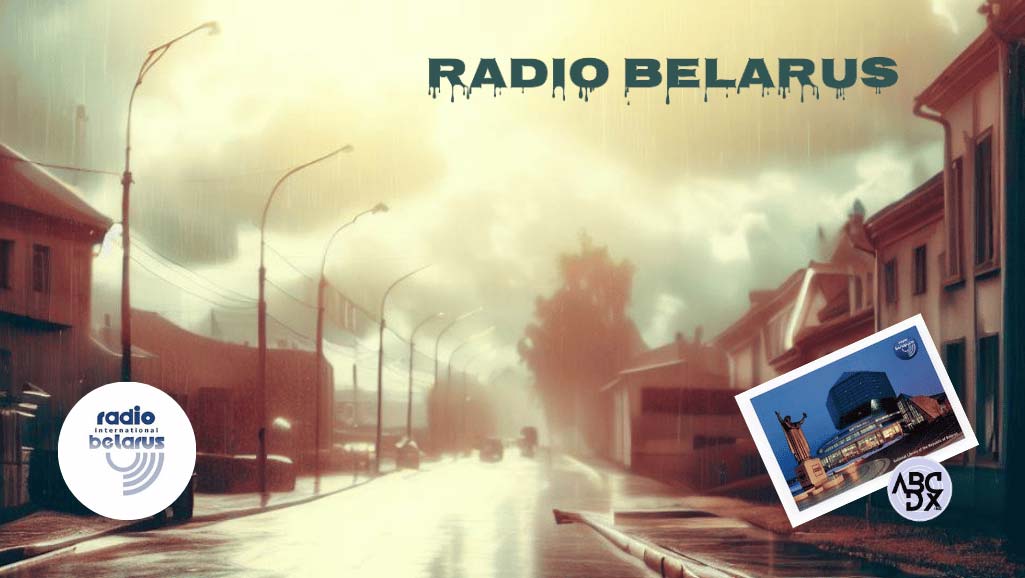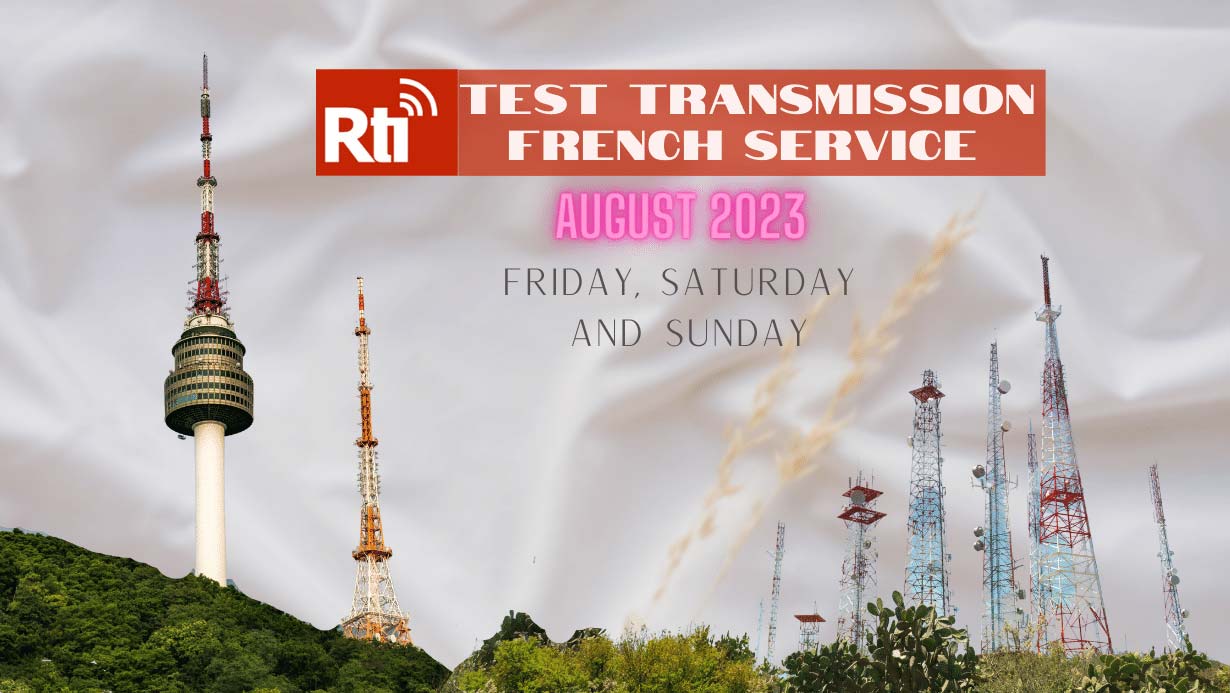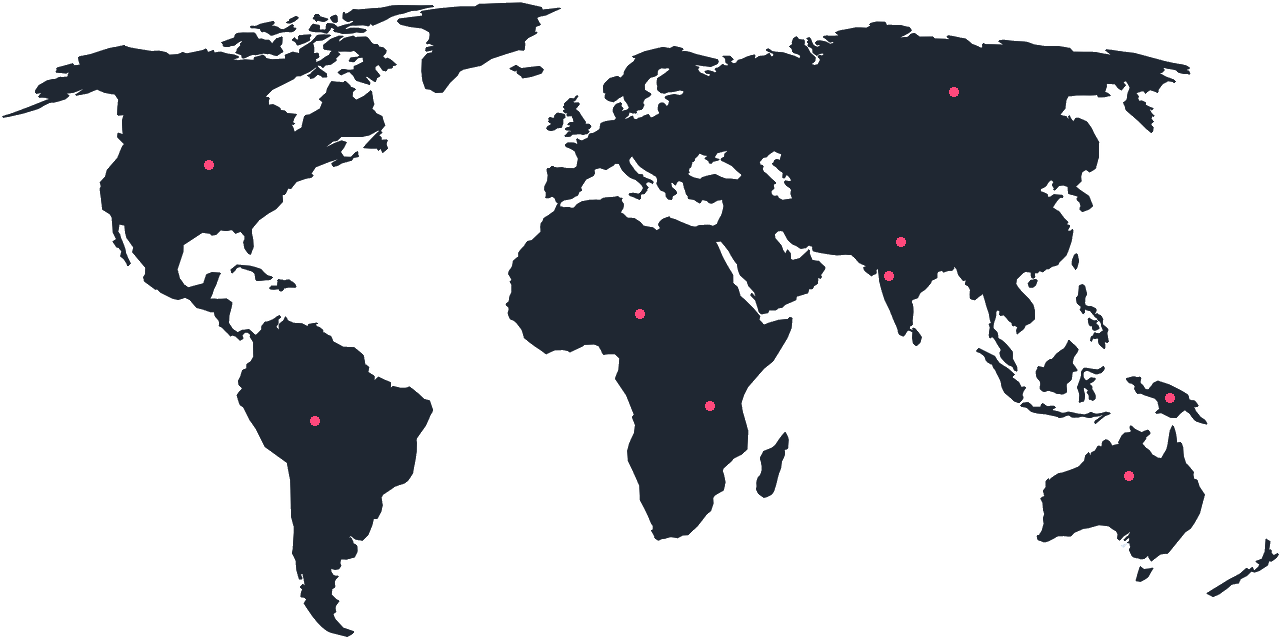In the shadows of history, a form of communication has thrived that defies borders and censorship – clandestine radio. From propaganda to resistance, espionage to psychological warfare, clandestine radio has played a crucial role in shaping political landscapes and ideologies worldwide. In this comprehensive blog, "Secrets of Clandestine Radio: Covert Waves that Shape History," we embark on a journey to explore the depths of clandestine radio, dissecting its classifications, historical significance, methods of operation, and ethical considerations.
In this Blog, we will focus on the following issues and reveal all the secrets of clandestine radio worldwide:
1. The Secrets Art of Clandestine Radio Broadcasting
1.1 Defining Clandestine Radio
We are introducing the concept of clandestine radio. It is a covert operation that discreetly transmits radio signals to reach specific audiences while evading authorities.
1.2 Purpose and Impact
Exploring the diverse motives behind clandestine radio: propaganda dissemination, psychological warfare, resistance communication, and intelligence operations.
2. Classification of Clandestine Radio
2.1 White, Grey, and Black Operations
Distinguishing between white, grey, and black clandestine radio operations based on their secrecy, legality, and intent levels.
3. Historical Perspectives: From Resistance to Espionage
3.1 World War II and Cold War Era
Examining how Secrets of Clandestine Radio played a pivotal role in resistance movements against occupation forces. And how superpowers utilized it for espionage during the Cold War.
3.2 Modern Applications
Delving into contemporary applications of clandestine radio, including political activism, cyber warfare, and covert communication in the digital age.
4. Secrets Method of Clandestine Radio Operation
4.1 Covert Broadcasting Techniques
Exploring the ingenious methods used in covert radio broadcasts, including low-power transmitters, remote locations, and encrypted communication channels.
4.2 Jamming and Interference
Unraveling the cat-and-mouse game of jamming and counter-jamming, where governments and entities vie for control over frequencies.
5. Ethical Considerations of Clandestine Radio Secrets
5.1 Propaganda and Manipulation
Analyzing the ethical dilemmas arising from the use of clandestine radio for propaganda and psychological manipulation.
5.2 Legality and International Law
Navigating the legal intricacies surrounding clandestine radio operations, including national and international regulations.
6. Real-life Case Studies
6.1 Radio Free Europe/Radio Liberty
Exploring how Radio Free Europe and Radio Liberty operated during the Cold War to broadcast information to countries under Soviet control.
6.2 "Numbers Stations"
Delving into the mysterious world of numbers stations – unexplained radio broadcasts that are believed to be used for espionage and communication with intelligence agents.
6.3 Swadhin Bangla Betar Kendra
Discover the potentiality of Clandestine Radio Secrets of Swading Bangla Betar Kendra - emerged as a powerful voice of resistance against the Pakistani authorities.
7. The Digital Age: New Frontiers
7.1 Online Clandestine Communication
Examining how the internet and digital platforms have opened new avenues for clandestine communication, including encrypted messaging apps and social media.
8. Conclusion: Echoes of Covert Waves
Reflecting on the enduring influence of clandestine radio throughout history and its continued relevance in a world defined by shifting political dynamics, technological advances, and the ever-present pursuit of information control.
In this comprehensive blog, we've peeled back the layers of secrets surrounding clandestine radio. And uncovering its fascinating history, diverse applications, and ethical implications. From the era of resistance movements to the digital age, clandestine radio continues to whisper secrets and shape the course of events, reminding us of the power of hidden waves in a world that thrives on openness.
Unveiling the Secrets of Clandestine Radio: Introduction

Picture Credit: ©Md Ashik Eqbal (S21TS) 2023.
Throughout history, a unique form of communication has flourished, transcending borders and censorship: clandestine radio. By tuning into covert frequencies, we unearth a world where messages are softly whispered through the airwaves, navigating a delicate balance between secrecy and revelation. Clandestine radio is a realm of hidden signals and obscured voices. It is also a powerful tool that defies traditional boundaries, carrying messages of propaganda, resistance, and intrigue to audiences often kept in the dark.
A diverse array of motives come to light in this intricate tapestry of covert operations. From psychological warfare to intelligence dissemination, from political activism to subversion, clandestine radio has etched its mark on history's annals. In this comprehensive blog, we embark on a journey to illuminate the enigmatic realm of secret radio. And delving into its classifications, historical significance, methods of operation, and the ethical complexities it presents.
What is Clandestine Radio

Picture Credit: ©Md Ashik Eqbal (S21TS) 2023.
Clandestine radio refers to the practice of broadcasting radio signals, often for political or ideological purposes, while attempting to remain hidden or secretive about the source of the broadcast. These broadcasts typically intended to reach a specific audience. And often in areas where the authorities restrict or control the dissemination of certain information. Clandestine radio operations have been historically used for a variety of purposes, including propaganda dissemination, political activism, resistance movements, and espionage.
The covert nature of clandestine radio makes it an invaluable channel for intelligence agencies, enabling the transmission of coded instructions to agents in the field. These broadcasts facilitate espionage operations, allowing agents to communicate under the radar of surveillance. Through historical contexts and contemporary examples, we'll uncover the intricate ways in which clandestine radio has shaped political dynamics, ideological battles, and even conflicts on the global stage.
The landscape of clandestine communication has been transformed by the advent of digital communication technologies and the Internet. While traditional radio broadcasts remain relevant in specific contexts, online platforms and social media have also become crucial tools for disseminating information and influencing opinions, often in a less traceable manner.
Join us in this exploration of the secrets of clandestine radio, where the airwaves carry messages. And also the echoes of intrigue, courage, and the relentless pursuit of information that knows no bounds. As we embark on this journey, we'll peel back the layers of concealment, one frequency at a time, to uncover the hidden narratives that have shaped the course of history.
Part 1: The Secrets Art of Clandestine Radio Broadcasting

Picture Credit: ©Md Ashik Eqbal (S21TS) 2023.
The art of clandestine broadcasting weaves secrecy and strategy into the airwaves. It entails crafting messages that transcend the surface, employing encryption, hidden meanings, and coded language to convey information discreetly. Through carefully chosen frequencies and remote locations, the artistry lies in delivering messages that whisper across boundaries, shaping narratives in the shadows.
1.1 Defining Clandestine Radio Secrets
Clandestine radio is a unique and intriguing phenomenon in the vast communication realm. At its core, secret radio refers to the covert transmission of radio signals, carefully orchestrated to reach specific target audiences while avoiding detection and attribution. Unlike traditional radio broadcasting, which seeks wide audiences and recognition. Clandestine radio operates in the shadows, employing secrecy as its guiding principle. These transmissions carry coded messages, concealed meanings, and encrypted instructions. Often speaking directly to the hearts and minds of those who seek alternate narratives and clandestine truths.
1.2 Purpose and Impact
Clandestine radio broadcasts serve a multitude of purposes, each with its own impact on the political, social, and psychological landscapes. Propaganda dissemination is a typical application where messages are carefully crafted to manipulate public opinion or promote specific ideologies. These broadcasts act as tools of psychological warfare, strategically designed to influence emotions and sow confusion. Resistance movements have utilized clandestine radio as a means of coordination. It uniting rebels in the face of adversity and inspires collective action.
Clandestine radio broadcasts are classified based on various factors, including their purpose, origin, and methods of operation. Here are some standard classifications:
a. Purpose:
- Propaganda Broadcasts: These broadcasts are used to disseminate specific information or messages to influence public opinion or promote a particular political or ideological agenda.
- Psychological Warfare: Broadcasts designed to psychologically affect the target audience by disseminating disinformation, rumors, or messages aimed at sowing confusion or demoralization.
- Resistance Communication: Radio broadcasts used by resistance movements to coordinate activities, disseminate instructions, and maintain communication in occupied or controlled territories.
- Espionage and Intelligence: Clandestine radio can also be used by intelligence agencies to transmit coded messages or instructions to agents in the field.
b. Origin:
- Government-Sponsored: These broadcasts are supported by a government or a state entity and are often used as a tool of statecraft to influence foreign populations or support covert activities.
- Non-State Actors: Clandestine radio broadcasts can also be carried out by non-state actors, including rebel groups, insurgent movements, or other organizations with political or ideological motivations.
c. Methods of Operation:
- Covert Broadcasts: These broadcasts are intentionally designed to avoid detection by authorities or competing factions. They might use low-power transmitters, operate from remote locations, or employ frequency-hopping techniques to evade interception.
- Jamming and Interference: Some clandestine broadcasts involve jamming or interfering with official government broadcasts to gain control of a frequency and reach a target audience.
d. Geographical Target:
- Domestic Clandestine Radio: Broadcasting within a country's borders, often targeting specific regions or populations within the country.
- Cross-Border Clandestine Radio: Broadcasting from one country to another, often targeting populations across borders, especially in situations of conflict or political tension.
e. Legal and Ethical Considerations:
- The legality of clandestine radio broadcasts varies depending on national and international laws. Some governments consider these broadcasts illegal, while others might view them as a form of free speech or resistance.
- Clandestine radio can raise ethical questions, mainly for propaganda, misinformation, or promoting violence.
As we delve deeper into the covert world of clandestine radio, we'll uncover the nuanced spectrum of its operations. From white to grey to black, we'll traverse the levels of secrecy that define these transmissions. We'll unveil the historical epochs where clandestine radio wielded its influence, shaping outcomes and molding ideologies. Through real-life case studies, we'll peer into the intricate mechanics of these operations, understanding their methods and their impact. And as we consider the ethical implications, we'll confront the moral dilemmas. The dilemmas that arise when information manipulate and control through covert broadcasts.
In exploring clandestine radio classifications, we'll venture into the intriguing territory of white, gray, and black operations. Join us in this exploration of secret radio, where the airwaves carry messages and the echoes of intrigue, courage, and the relentless pursuit of information that knows no bounds. As we embark on this journey, we'll peel back the layers of concealment, one frequency at a time, to uncover the hidden narratives that have shaped the course of history
Part 2 Unveiling the Secrets: Classification of Clandestine Radio
As we delve deeper into the secretive realm of radio transmissions, we come across a range of classified operations based on their confidentiality level, purpose, and impact. These classifications, known as white, grey, and black operations, act as markers in this complex terrain, directing us through the nuances of hidden communication.
2.1 White, Grey, and Black: Navigating the Spectrum of Clandestine Operations
In the realm of covert operations, secrecy, and visibility exist on a spectrum, ranging from the overt to the underground. White, Gray, and Black classifications offer a nuanced understanding of the levels of concealment and the ethical considerations inherent in such endeavors.
2.1.a White Operations: Transparency and Openness
White operations are characterized by transparency and openness. These overt actions are conducted openly, without the veil of secrecy. Their visibility is intentionally maintained, often to influence public perception or send a clear message. While White operations lack the element of surprise and concealment, they play a role in diplomatic gestures, crisis management, and international relations, where maintaining trust and open communication is paramount.
Example: Radio Free Europe

Radio Free Europe, operating during the Cold War, exemplified a white operation. It openly broadcasted news and information to Eastern European countries under Soviet influence. The station's transparency aimed to provide uncensored news and foster democratic ideals in regions where state-controlled media dominated. Radio Free Europe's overt communication was crucial in shaping perceptions and promoting openness.
2.1.b Gray Operations: Veiled Intentions and Ambiguity
Sitting at the midpoint of the spectrum are Gray operations, where veiled intentions and ambiguity come into play. These operations involve a delicate balance between limited disclosure and partial concealment. Messages may be subtly coded or cloaked in obscurity, allowing for multiple interpretations. Gray procedures often utilize plausible deniability, presenting actions as innocent while carrying an underlying message to a select audience.
Example: Radio Moscow's Ambiguous Messages
Radio Moscow, the state-controlled broadcaster of the Soviet Union, engaged in gray operations by using ambiguous language to convey hidden messages. While broadcasting overtly ideological content, the station's messages carried subtleties and double meanings. These cryptic messages intended to resonate with sympathetic listeners and convey veiled messages of solidarity or coded instructions.
2.1.c Black Operations: Depths of Covert Action
At the far end of the spectrum lie Black operations, characterized by the depths of covert action. These operations are shrouded in secrecy, intentionally hidden from public view. Often involving high-stakes espionage or activities that challenge legal and ethical boundaries, Black operations operate in the shadows. Plausible deniability becomes a critical element, enabling entities to distance themselves from the actions taken.
Example: "Numbers Stations" and Covert Intelligence
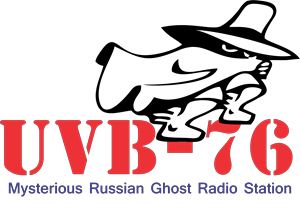
"Numbers stations," like the famous "UVB-76" station, exemplify black operations. These mysterious radio broadcasts transmit sequences of numbers are believed to be coded instructions for intelligence operatives. The true origins and purposes of these broadcasts remain hidden. And the covert nature of the messages adds to the intrigue. These stations operate in the depths of secrecy, embodying the essence of covert intelligence gathering.
Understanding the nuances of White, Grey, and Black operations provides insight into the complex world of clandestine endeavors. Each level of secrecy serves distinct purposes, raising ethical questions and revealing the intricate dance between visibility and concealment in pursuing strategic goals. Whether in the realm of intelligence, diplomacy, or conflict, navigating this spectrum is essential for comprehending the multifaceted nature of covert actions.
In exploring these classifications, we'll delve deeper into the motivations behind each level of secrecy. And also their impact on audiences and societies. Next, we navigate the spectrum of covert communication. Discover the distinctions between grey, dark, and black operations define the parameters of hidden transmissions that shape history.
Part 3: Historical Perspectives: Secrets From Resistance to Espionage

Picture Credit: ©Md Ashik Eqbal (S21TS) 2023.
From the hushed whispers of resistance movements to the shadowy corridors of espionage, the historical journey of clandestine radio unfolds as a testament to human ingenuity and determination. As we embark on this exploration, we traverse pivotal moments in history, where covert broadcasts served as beacons of hope for oppressed populations and as tools for intelligence agencies navigating the complexities of global conflicts. Join us as we delve into the historical tapestry that weaves resistance and espionage through the enigmatic airwaves.
3.1 Clandestine Radio Secrets in World War II and Cold War Era
As we travel back in time, we encounter pivotal moments when clandestine radio emerged as a powerful force in shaping the outcome of conflicts. During World War II, resistance movements utilized covert broadcasts to rally populations under occupation. It is fostering a sense of unity and defiance. Clandestine radio stations acted as beacons of hope, transmitting messages of resistance. Also, instructions for sabotage, and vital information to the oppressed.
The Cold War era witnessed a new chapter in the evolution of clandestine radio. Superpowers engaged in a battle of ideologies, using radio broadcasts to sway opinions and destabilize opposing regimes. From Radio Free Europe's broadcasts into Eastern Europe to Radio Liberty's efforts to break through the Iron Curtain, clandestine radio became a tool for ideological warfare. These broadcasts sought to counter state-controlled narratives and provide alternate perspectives, often in defiance of the regimes they targeted.
3.2 Modern Applications
As technology advanced, so did the methods of clandestine radio. In the digital age, covert communication has emerged, utilizing encrypted messaging apps, anonymized social media accounts, and secure online platforms. Secrets radio's applications have expanded beyond political resistance and espionage to encompass cyber warfare, where the battlefield is the virtual realm and the weapons are lines of code. In this era of information dominance, clandestine radio continues to evolve, adapting to the changing landscapes of global politics and technology.
In the next segment of our journey, we'll delve into the methods employed by clandestine radio operations. From covert broadcasting techniques to the delicate dance of jamming and counter-jamming, we'll uncover the strategies that keep hidden waves transmitting and their messages echoing through time. Join us as we peel back the layers of history and explore the dynamic tactics of clandestine radio.
Part 4: Unveiling the Secrets Method of Clandestine Radio Operation
Steeped in a world of secrecy, the methods of undercover radio operation transcend mere broadcasts, venturing into a realm of intricate tactics and veiled strategies. From remote locations to encrypted frequencies, these covert endeavors employ an arsenal of tools. And also to ensure messages remain hidden from prying eyes. Embark with us on a journey into the shadowy art of transmitting messages beyond the surface, where every signal holds a whisper of intention.
4.1 Covert Broadcasting Techniques
Step behind the scenes of clandestine radio operations and discover the ingenious techniques that keep hidden transmissions flowing. Covert broadcasting techniques are the cornerstone of these operations. And allowing messages to be sent while avoiding detection by authorities and competing factions.
Low-Power Transmitters: Clandestine radio stations often employ low-power transmitters to minimize their signal's reach. By broadcasting at a lower power, these stations can limit their geographical footprint, making it more challenging for adversaries to pinpoint their location.
Remote Locations: Operating from remote and hidden locations is a common strategy. Stations might be set up in isolated areas, such as forests or mountains, where authorities or rival intelligence agencies are less likely to discover them.
Encrypted Communication Channels: Encryption is the lifeblood of covert communication. Messages are encoded using complex algorithms, ensuring that only those with the decryption keys can understand the content. This method adds an additional layer of security, making it difficult for unauthorized individuals to intercept and decipher messages.
4.2 Jamming and Interference
In the world of clandestine radio, jamming and interference are not just obstacles – they're weapons used to seize control of frequencies and block rival transmissions.
Jamming: Governments and entities may employ jamming techniques to disrupt the broadcasts of clandestine radio stations. Jamming involves transmitting powerful signals on the same frequency, effectively drowning out the intended messages. This cat-and-mouse game requires stations to adapt their frequencies and techniques to avoid being silenced constantly.
Counter-Jamming: Clandestine radio operators engage in counter-jamming to regain control of frequencies. Stations can thwart jamming attempts by rapidly shifting frequencies or transmitting intermittent signals. This is also ensure their messages reach their intended audience.
As we unravel the methods that keep clandestine radio alive, we'll delve into the intricate world of ethical considerations. Join us in the next segment as we confront the moral dilemmas that arise from the use of covert communication for propaganda, manipulation, and control.
Part 5: Secrets of Ethical Considerations: Clandestine Radio

Picture Credit: ©Md Ashik Eqbal (S21TS) 2023.
Ethical considerations cast a perplexing light on the balance between truth and manipulation within the covert corridors of clandestine radio. As hidden messages find their way into the airwaves, questions emerge about the ethical implications of psychological warfare, propaganda dissemination, and the use of misinformation. Here, we navigate the morally complex terrain of covert communication. And the line between empowerment and ethical dilemmas blurs in pursuing strategic objectives.
5.1 Propaganda and Manipulation
The power of clandestine radio is not only in its ability to transmit hidden messages but also in its capacity to shape perceptions and manipulate opinions. However, with great power comes ethical responsibilities.
Balancing Truth and Deception: Clandestine radio's use of misinformation and manipulation raises ethical questions. While these tactics can achieve specific objectives, they blur the line between truth and deception, potentially eroding trust and credibility.
Psychological Warfare: Propaganda and psychological manipulation through covert broadcasts can profoundly affect individuals and societies. The ethics of exploiting emotions and manipulating public sentiment for political gain weigh heavily on the conscience.
5.2 Legality and International Law
Clandestine radio operations often traverse legal gray areas, challenging national and international laws. The clash between the right to free speech and the potential harm caused by covert broadcasts raises complex ethical dilemmas.
Sovereignty and Intrusion: Broadcasting into another country's territory without consent can be perceived as violating sovereignty. The ethical implications of encroaching on another nation's media landscape spark debates on the boundaries of information dissemination.
Collateral Consequences: Clandestine radio operations may lead to unintended consequences. Broadcasts designed to influence political outcomes can inadvertently spark conflict or unrest, raising ethical concerns about the broader impact of covert actions.
As we reflect on the ethical considerations surrounding clandestine radio, we'll delve into real-life case studies highlighting the influence and impact of covert broadcasts. Join us as we explore the stories of Radio Free Europe/Radio Liberty and delve into the enigmatic world of "numbers stations." In the next segment, we'll journey into the digital age, where the internet and its technological prowess reshape the frontiers of covert communication.
Part 6: Real-life Case Studies: Open Secrets of Clandestine Radio
Experience the profound impact of clandestine radio's covert whispers through real-life case studies. These cases reveal the power of hidden communication. Come with us on a journey through historical pages and contemporary events that shed light on the tangible influence of clandestine radio throughout the annals of time.
Real-life case studies offer vivid glimpses into the profound impact of clandestine radio's covert whispers. From the courageous broadcasts of Swadhin Bangla Betar Kendra during Bangladesh's liberation struggle to the enigmatic numbers stations shrouded in espionage mysteries, these cases unveil the power of hidden communication. Join us on an expedition through historical pages and contemporary events that illuminate the tangible influence of clandestine radio across the annals of time.
6.1 Radio Free Europe/Radio Liberty: Challenging the Iron Curtain

Step into the shoes of history as we explore the iconic story of Radio Free Europe and Radio Liberty. Born during the Cold War, these stations defied the Iron Curtain's constraints, broadcasting uncensored news and information into Eastern Europe and the Soviet Union. In a landscape dominated by state-controlled media, these clandestine broadcasts provided a lifeline of truth and alternative narratives to citizens hungry for uncensored information. The ethical complexities of challenging oppressive regimes through covert radio shed light on the enduring struggle for information and freedom. The impact of these broadcasts resonates as a testament to the power of hidden waves to transform lives and shape societies.
6.2 "Numbers Stations": Cryptic Echoes of Espionage

Venture into the mysterious realm of "numbers stations," a phenomenon that has captured the imagination of conspiracy theorists and intelligence enthusiasts alike. These enigmatic broadcasts feature sequences of numbers, seemingly meaningless to the uninitiated. Yet, they are believed to be part of coded communication between intelligence agencies and their agents in the field. The eerie allure of numbers stations raises questions about the ethics of encrypted transmissions and the thin line between secrecy and espionage.
6.3 Swadhin Bangla Betar Kendra: The Voice of Liberation
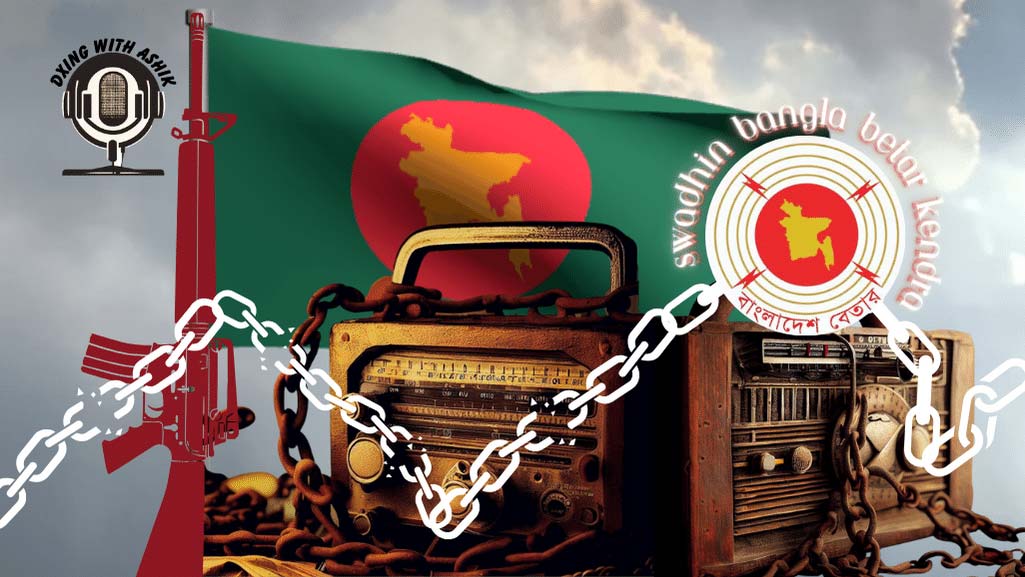
Picture Credit: ©Md Ashik Eqbal (S21TS) 2023.
During the Bangladesh Liberation War in 1971, Swadhin Bangla Betar Kendra (Free Bengal Radio Center) emerged as a powerful voice of resistance against the Pakistani authorities. As East Pakistan (now Bangladesh) sought independence from West Pakistan (now Pakistan), the Bengali population faced brutal suppression. In response, Swadhin Bangla Betar Kendra clandestinely broadcasted hope, unity, and defiance messages.
Impact on the Liberation Movement:
1. Unifying the Population: The Swadhin Bangla Betar Kendra broadcasts served as a rallying point for the Bengali population. The radio broadcasts helped unify and mobilize the people of East Pakistan in their struggle for independence.
2. Counteracting Propaganda: The Pakistani government used its state-controlled media to propagate its version of events. Swadhin Bangla Betar Kendra provided an alternative narrative that countered the misinformation and disinformation spread by the authorities.
3. Boosting Morale: The broadcasts provided crucial updates about the liberation movement's progress, encouraging the people to stay resilient in the face of adversity. The station's messages boosted morale and instilled a sense of purpose among the population.
6.4 Radio Hanoi: The Voice of Resilience
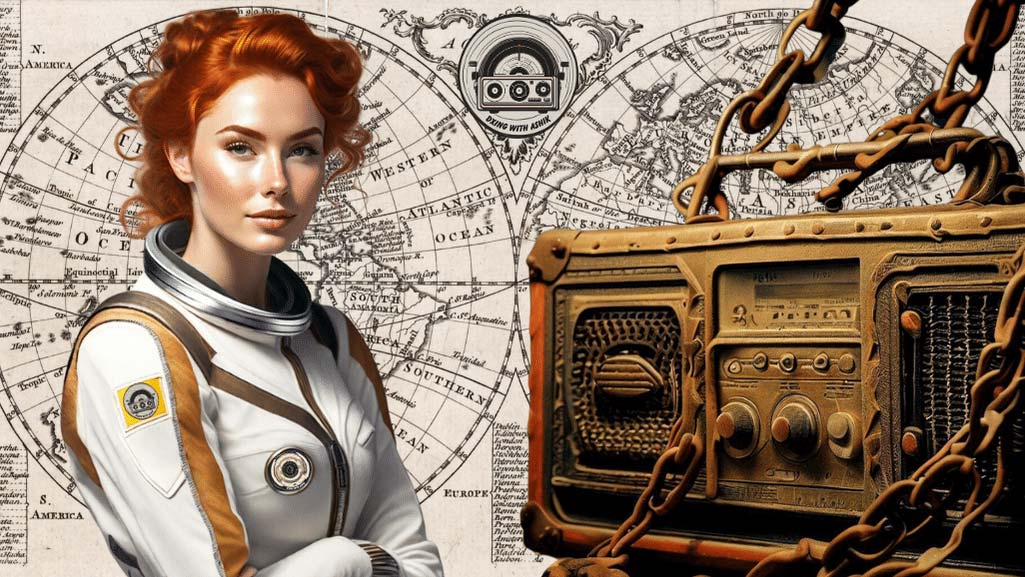
Picture Credit: ©Md Ashik Eqbal (S21TS) 2023.
Radio Hanoi, Vietnam, operating during the Vietnam War, exemplified the power of clandestine radio during conflict. As the United States engaged in military operations in Vietnam, Radio Hanoi served as a propaganda tool for the North Vietnamese government and the Viet Cong. It has an aim to inspire resistance and foster a sense of nationalism.
Impact on the Liberation Movement:
1. Anti-War Propaganda: Radio Vietnam used its broadcasts to propagate anti-American sentiments and foster opposition to the U.S. intervention in Vietnam. The station highlighted the toll of the war on the Vietnamese population. And also framed the struggle as a fight against imperialism.
2. Coordination and Communication: The station played a role in coordinating Viet Cong activities, disseminating military updates, and transmitting coded messages to fighters in the field. This covert communication contributed to the insurgency's operational effectiveness.
3. Psychological Warfare: By broadcasting messages of resilience, national pride, and anti-imperialism, Radio Vietnam aimed to sway public opinion and inspire loyalty to the cause of liberation.
Swadhin Bangla Betar Kendra and Radio Hanoi, and even the Congress Radio are poignant examples of clandestine radio's impact on liberation movements. These stations harnessed the power of the airwaves to amplify their messages, foster unity, and challenge oppressive forces. In doing so, they became broadcasters of information and beacons of hope and defiance in the face of adversity.
As we conclude our exploration of these intriguing case studies, we turn our attention to the digital age and the transformation of clandestine communication in the modern world. In our next segment, we unveil the ways in which online platforms, encrypted apps. Also, the internet has reshaped the landscape of covert communication, presenting new challenges and opportunities.
Part 7: No Secrets in The Digital Age: New Frontiers of Clandestine Radio

In the digital age, the clandestine radio landscape has morphed into new frontiers, where encrypted messages and hidden codes now traverse the virtual expanse. As traditional airwaves meet the intricacies of the internet, covert communication has found refuge in encrypted apps, social media platforms, and cyber battlegrounds. In this era of unseen warfare, join us as we unravel the evolution of covert operations in the digital realm.
7.1 Online Clandestine Communication
Enter the digital age, where the internet becomes a new battlefield for clandestine communication. In a world where information flows freely, encrypted messaging apps and anonymous online platforms have become havens for covert communication. The digital realm offers anonymity and the ability to reach global audiences, transforming the way messages are disseminated and received.
Encryption and Secure Channels: Modern clandestine operations leverage end-to-end encryption, ensuring that messages remain private and secure. Encrypted messaging apps have become a staple in covert communication, allowing individuals and groups to exchange information beyond the prying eyes of surveillance.
Social Media: Double-Edged Sword: Social media platforms offer a dual promise - the ability to reach vast audiences and the challenge of maintaining secrecy. Covert actors navigate the intricate balance of using these platforms for dissemination while avoiding detection by algorithms and adversaries.
7.2 The Era of Cyber Warfare
As digital communication evolves, so does the battlefield. Cyber warfare emerges as a new frontier for covert operations, where hackers and intelligence agencies engage in covert activities in the digital realm. From infiltrating computer networks to spreading disinformation online, cyber warfare tactics redefine the nature of covert operations.
Weaponizing Information: Cyber warfare allows for the manipulation of information on a massive scale. The spread of disinformation, the hacking of critical infrastructure, and the targeting of political entities underscore the potential impact of covert actions in the digital age.
8. Impact of Clandestine Radio: Without Secrets the Past and the Present
Through the sands of history and the digital tide of the present, the impact of clandestine radio echoes resolutely. From fueling resistance movements in times of oppression to steering the currents of espionage, these covert broadcasts have left indelible marks on the tapestry of human affairs. Join us as we unravel the enduring reverberations of clandestine radio, tracing its transformative journey across eras and unveiling its relevance in our modern world of interconnected secrets.
8.1 Past Impact:
1. Resistance and Liberation: Clandestine radio played a pivotal role in resistance movements during times of occupation and oppression. It provided a lifeline of information, coordination, and inspiration to populations living under repressive regimes. For example, during World War II, stations like the BBC's European Service and the Voice of America gave hope to occupied territories by broadcasting uncensored news and fostering a sense of unity.
2. Psychological Warfare: Clandestine radio was a weapon in the psychological warfare arsenal during the Cold War. Radio Free Europe and Radio Liberty challenged Soviet-controlled narratives and provided an alternative perspective to people behind the Iron Curtain. These broadcasts were aimed at eroding the credibility of the regimes, sowing doubt, and instigating ideological change.
3. Espionage and Intelligence: Covert radio broadcasts served as a means of communication between intelligence agencies and their agents in the field—the use of coded messages and encryption allowed for secure transmission of instructions. "Numbers stations," for instance, were believed to be a tool for transmitting instructions to spies operating in the shadows.
8.2 Current Role:
1. Digital Transformation: In today's digital age, clandestine communication has taken on new dimensions. The rise of encrypted messaging apps, anonymous online platforms, and social media networks has transformed the landscape of covert communication. These platforms offer anonymity, enabling individuals and groups to disseminate information while evading surveillance.
2. Cyber Warfare: Clandestine communication has extended into cyber warfare. Espionage operations, disinformation campaigns, and hacking activities have become tools of covert operations in the digital world. State-sponsored actors and hackers exploit vulnerabilities in computer networks to gather intelligence, disrupt services, and influence public opinion.
3. Political Activism and Dissent: The digital era has democratized communication, allowing grassroots movements to use covert communication to challenge authority and amplify their messages. Dissident voices in authoritarian regimes often turn to encrypted apps and social media to share information, organize protests, and bypass censorship.
4. Global Influence: The reach of covert communication has expanded globally. Radio stations and digital platforms can target specific populations across borders, allowing for the dissemination of ideologies, narratives, and propaganda on a larger scale.
5. Ethical and Legal Complexities: While covert communication in the digital age provides opportunities for marginalized voices and resistance movements, it also raises ethical questions. The fine line between activism and manipulation, privacy and security, is more complex than ever.
In essence, clandestine radio communication's impact in the past was characterized by its role in resistance, psychological warfare, and intelligence operations. In the digital age, its role has transformed, integrating with encrypted apps, social media, and cyber warfare. The lines between empowerment, manipulation, and security are blurred, reflecting the complexities of the modern communication landscape.
Conclusion: Echoes of Covert Waves

Picture Credit: ©Md Ashik Eqbal (S21TS) 2023.
In the intricate dance of clandestine radio, we've journeyed through history, ethics, and technology. From World War II's resistance movements to the digital era's cyber battles, the echoes of covert waves continue to shape our world. Clandestine radio's evolution mirrors the evolution of society itself – a constant adaptation to new challenges and opportunities.
As we reflect on the intricacies of covert communication, we're reminded of the power that lies within the airwaves and the digital currents. The underground and the overt, the hidden and the revealed, coexist in a delicate equilibrium that shapes the course of history. In a world that values transparency, the whispers of clandestine radio remind us that hidden forces are at play beneath the surface, forever influencing the narratives that define our reality.



